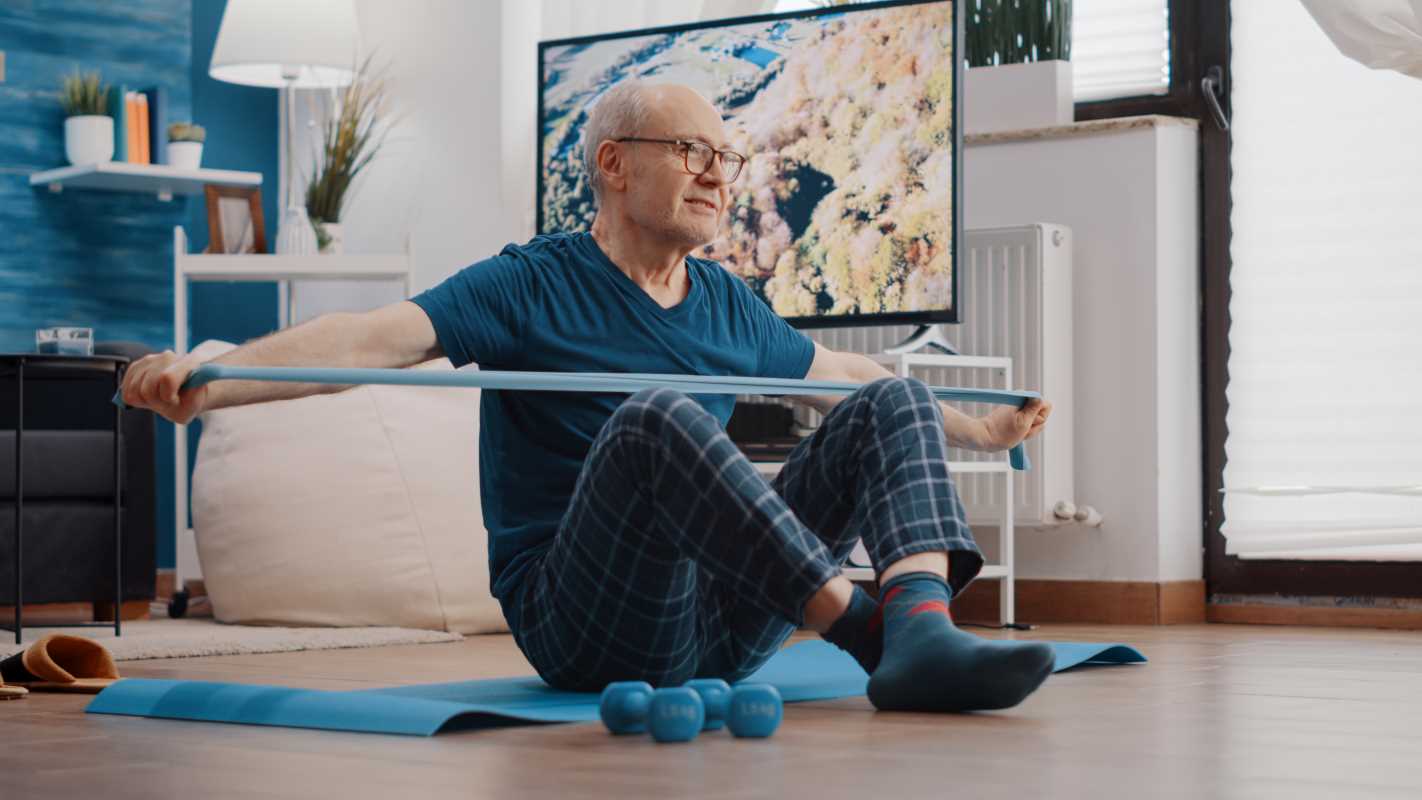Hunched over your phone or sitting at a desk all day can do a number on your neck. Tech neck, also known as text neck, develops due to poor posture from looking down at devices or slouching when working at a computer. This repetitive strain can lead to stiffness, tension, and even headaches. Incorporating simple neck stretches into your daily routine can ease discomfort and improve posture over time. These stretches target tight neck muscles, improve flexibility, and help release built-up tension caused by prolonged periods of looking down at screens. We're sharing some effective stretches you can do at home or work, along with tips on how they help alleviate tech neck and keep your muscles feeling great.
1. Chin Tucks
Chin tucks strengthen the muscles that support good posture and can relieve tension at the base of the neck.
- How to do it: Sit or stand tall, keeping your back straight. Gently pull your chin back as if making a double chin. Hold for 5 seconds and release.
- Repetitions: Perform 8–10 tucks.
- How It Helps: Retrains neck muscles to hold proper posture and relieves strain caused by looking downward.
Chin tucks are discreet enough to do during work meetings or when waiting for an email to load.
2. Neck Side Stretch
Stretching the sides of your neck helps loosen tight muscles in the upper trapezius and neck.
- How to do it: Sit upright with your shoulders relaxed. Tilt your head to one side, bringing your ear toward your shoulder. Hold for 20–30 seconds and switch sides.
- Repetitions: Stretch each side 2–3 times.
- How It Helps: Relieves tension along the sides of the neck and promotes better mobility.
Adding a gentle hand pull on the side of your head deepens the stretch for extra relief.
3. Levator Scapulae Stretch
This stretch targets a key muscle connecting your neck and shoulder blades.
- How to do it: Sit or stand tall. Turn your head to one side and look downward at an angle, as if looking into the front pocket of your shirt. Use your hand to gently enhance the stretch by placing it on the back of your head. Hold for 20–30 seconds and switch sides.
- Repetitions: Repeat 2–3 times per side.
- How It Helps: Loosens the levator scapulae, reducing neck and shoulder tension.
Perfect for relieving stiffness after sitting at a desk all day.
4. Neck Rotations
Rotations improve the range of motion and release stiffness from the sides of the neck.
- How to do it: Sit or stand tall. Gently turn your head to the right, trying to align your chin with your shoulder. Hold for 15–20 seconds, then rotate to the left.
- Repetitions: Complete 3 sets on each side.
- How It Helps: Loosens tightness from repetitive screen use and encourages full mobility.
Going slow and steady with neck rotations prevents overstretching.
5. Forward Neck Stretch
Forward stretching relieves tightness along the back of the neck and the base of the head.
- How to do it: Sit tall with both hands clasped at the back of your head. Slowly guide your head downward so your chin moves toward your chest. Hold for 20 seconds.
- Repetitions: Repeat 2–3 times.
- How It Helps: Lengthens the muscles at the back of your neck to release stiffness and tension.
This stretch is especially beneficial after long periods of staring at a computer screen.
6. Shoulder Rolls
Shoulder rolls are great for relieving tension in the neck and shoulders simultaneously.
- How to do it: Sit or stand tall with your arms relaxed by your sides. Gently roll your shoulders forward in a circular motion 10 times, then reverse the direction.
- How It Helps: Loosens tight shoulder muscles, which often contribute to neck pain.
Adding this to your routine can prevent tension from building up throughout the day.
7. Upper Trapezius Stretch
Targeting the upper trapezius is essential for relieving neck and upper back discomfort.
- How to do it: Sit upright. Place your right hand over your head and rest it on your left ear. Slowly pull your head toward your right shoulder. Hold for 15–20 seconds and switch sides.
- Repetitions: Repeat 2–3 times per side.
- How It Helps: Reduces tension and tightness, improving overall neck movement.
Keeping your shoulders relaxed during this stretch enhances its effectiveness.
Tips to Prevent Tech Neck
- Keep screens at eye level to avoid constant downward tilting of the head.
- Take breaks every 30 minutes to move around and stretch.
- Use an adjustable chair or standing desk for ergonomic support.
- Practice good posture by keeping your shoulders relaxed and your head aligned with your spine.
- Invest in products like a neck support pillow, which can help improve alignment and comfort during sleep.







